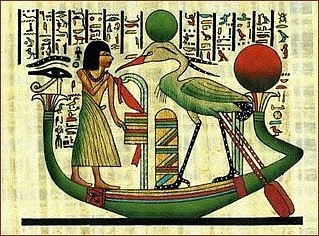Related Research Articles

Papermaking is the manufacture of paper and cardboard, which are used widely for printing, writing, and packaging, among many other purposes. Today almost all paper is made using industrial machinery, while handmade paper survives as a specialized craft and a medium for artistic expression.

Pulp is a lignocellulosic fibrous material prepared by chemically or mechanically separating cellulose fibers from wood, fiber crops, waste paper, or rags. Mixed with water and other chemical or plant-based additives, pulp is the major raw material used in papermaking and the industrial production of other paper products.

The pulp and paper industry comprises companies that use wood as raw material and produce pulp, paper, paperboard, and other cellulose-based products.

A paper mill is a factory devoted to making paper from vegetable fibres such as wood pulp, old rags, and other ingredients. Prior to the invention and adoption of the Fourdrinier machine and other types of paper machine that use an endless belt, all paper in a paper mill was made by hand, one sheet at a time, by specialized laborers.
Sizing or size is a substance that is applied to, or incorporated into, other materials—especially papers and textiles—to act as a protective filler or glaze. Sizing is used in papermaking and textile manufacturing to change the absorption and wear characteristics of those materials.

Fiber crops are field crops grown for their fibers, which are traditionally used to make paper, cloth, or rope.

The recycling of paper is the process by which waste paper is turned into new paper products. It has a number of important benefits: It saves waste paper from occupying homes of people and producing methane as it breaks down. Because paper fibre contains carbon, recycling keeps the carbon locked up for longer and out of the atmosphere. Around two-thirds of all paper products in the US are now recovered and recycled, although it does not all become new paper. After repeated processing the fibres become too short for the production of new paper, which is why virgin fibre is frequently added to the pulp recipe.

Charles Fenerty, was a Canadian inventor who invented the wood pulp process for papermaking, which was first adapted into the production of newsprint. Fenerty was also a poet, writing over 32 known poems.

Wove paper is a type of paper first created centuries ago in the Orient, and subsequently introduced to England, Europe and the American colonies in the mid-eighteenth century. Hand-made wove paper was first produced by using a wooden mould that contained a finely-woven brass vellum, upon which the paper pulp was applied and dried, creating a smooth, uniform surface.
Printing and writing papers are paper grades used for newspapers, magazines, catalogs, books, notebooks, commercial printing, business forms, stationeries, copying and digital printing. About 1/3 of the total pulp and paper marked is printing and writing papers. The pulp or fibers used in printing and writing papers are extracted from wood using a chemical or mechanical process.

A writing material is a surface that can be written on with suitable instruments, or used for symbolic or representational drawings. Building material on which writings or drawings are produced are not included. The gross characterization of writing materials is by the material constituting the writing surface and the number, size, and usage and storage configuration of multiple surfaces into a single object. Writing materials are often paired with specific types of writing instruments. Other important attributes of a writing material are its reusability, its permanence, and its resistance to fraudulent misuse.

Paper is a thin sheet material produced by mechanically or chemically processing cellulose fibres derived from wood, rags, grasses, or other vegetable sources in water, draining the water through a fine mesh leaving the fibre evenly distributed on the surface, followed by pressing and drying. Although paper was originally made in single sheets by hand, almost all is now made on large machines—some making reels 10 metres wide, running at 2,000 metres per minute and up to 600,000 tonnes a year. It is a versatile material with many uses, including printing, painting, graphics, signage, design, packaging, decorating, writing, and cleaning. It may also be used as filter paper, wallpaper, book endpaper, conservation paper, laminated worktops, toilet tissue, currency, and security paper, or in a number of industrial and construction processes.
Deinking is the industrial process of removing printing ink from paperfibers of recycled paper to make deinked pulp.

Paper is a thin nonwoven material traditionally made from a combination of milled plant and textile fibres. The first paper-like plant-based writing sheet was papyrus in Egypt, but the first true paper, the first true papermaking process was documented in China during the Eastern Han period, traditionally attributed to the court official Cai Lun. This plant-puree conglomerate produced by pulp mills and paper mills was used for writing, drawing, and money. During the 8th century, Chinese paper making spread to the Islamic world, replacing papyrus. By the 11th century, papermaking was brought to Europe, where it replaced animal-skin-based parchment and wood panels. By the 13th century, papermaking was refined with paper mills using waterwheels in Spain. Later improvements to the papermaking process came in 19th century Europe with the invention of wood-based papers.
The History of Papermaking in New York had its beginnings in the late 18th century, at a time when linen and cotton rags were the primary source of fibers in the manufacturing process. By 1850 there were more than 106 paper mills in New York, more than in any other state. A landmark in the history of papermaking in the United States was the installation of the first Fourdrinier machine in the country at a mill in Saugerties, New York, in 1827. Papermaking from ground-wood pulp began in New York in 1869, with the establishment of the Hudson River Pulp & Paper Company in Corinth and also with the work of Illustrious Remington and his sons in Watertown. The innovation and success of the Remingtons spurred further development of the industry in the state.

This article addresses the history of papermaking in Massachusetts.

Watercolor paper is paper or substrate onto which an artist applies watercolor paints, pigments, or dyes. Artists generally no longer use stone or tomb walls as a substrates. Many types of watercolour papers that are manufactured for the use of watercolors are currently available. Watercolor paper can be made of wood pulp exclusively, or mixed with cotton fibers. Pure cotton watercolor paper is also used by artists, though it typically costs more than pulp-based paper. It is also available as an acid-free medium to help its preservation.
Bradner Smith & Company was a US paper manufacturer and dealer. It was established in Chicago, Illinois in 1853. In 2013, it was announced that Central National-Gottesman had acquired the assets and business of Bradner Central Company which operated Brander Smith.
Hemp paper is paper varieties consisting exclusively or to a large extent from pulp obtained from fibers of industrial hemp. The products are mainly specialty papers such as cigarette paper, banknotes and technical filter papers. Compared to wood pulp, hemp pulp offers a four to five times longer fibre, a significantly lower lignin fraction as well as a higher tear resistance and tensile strength. Because the paper industry's processes have been optimized for wood as the feedstock, production costs currently are much higher than for paper from wood.

The Paper Mill Homburg, built in 1807, is located in Triefenstein-Homburg am Main. It was used until 1975 for the commercial production of paper and cardboard and was renovated 1994 to 1997 as a paper mill museum. The production facilities with original machines and equipment are preserved.
References
- ↑ Hunter, Dard. Papermaking: The History and Technique of an Ancient Craft. New York: Alfred A Knopf, 1947.
- ↑ Fulling, Edmund H. “Botanical Aspects of the Paper-Pulp and Tanning Industries in the United States – An Economic and Historical Survey.” American Journal of Botany. 43 (1956): 621-634.
- ↑ Baker, Nicholson. “Virgin Mummies.” Double Fold: Libraries and the Assault on Paper . New York: Random House, 2001.
- ↑ Fulling, 622.
- ↑ Baker, 56.
- ↑ Wolfe, S.J. “I. Augustus Stanwood had a PaperMill in Maine.” Kennebec Historical Society Meeting. Christ Church, Gardiner, ME. 19 July 2006.
- ↑ Baker, 55-56.
- ↑ Baker, 58.
- ↑ Deck, Isaiah. “On a Supply of Paper Material from the Mummy Pits of Egypt.” Transactions of the American Institute of the City of New York, for the year 1854. Albany: C. Van Benthuysen, 1855. 83-93.
- ↑ Deck, 87.
- ↑ Deck, 87-88.
- ↑ Wolfe, S.F. “Mummy Paper and Pestilence.” Online posting. 6 Jan. 2004. Exlibris.
- 1 2 Hunter, 383.
- ↑ Dane, Joseph A. “The Curse of the Mummy Paper.” Printing History. 17.2 (1995): 18-25.
- ↑ Dane, 21-22.
- ↑ Wolfe, “Augustus,” 6-7.
- ↑ Baker, 61.
- ↑ Wolfe, “Augustus,” 8-9.
- ↑ Sumner, Judith. American Household Botany: A History of Useful Plants, 1620-1900. Portland: Timber Press, 2004.
- ↑ Baker, 61-62.
- ↑ Wolfe, “Augustus,” 14.
- ↑ Dane, 20.
- ↑ Baker, 63-64.
- ↑ Dane, 23.
- ↑ Wolfe, “Augustus,” 25-27.
- ↑ Radford, Benjamin (2019). "Bailing in the mummies". Skeptical Inquirer. 43 (2): 43–45.
- ↑ Twain, Mark. The Innocents Abroad, or, The New Pilgrim’s Progress. New York: Signet Classics, 1997.
- ↑ Fletcher, Joann. "Mummies around the world". BBC News. BBC. Retrieved 23 March 2019.
- ↑ Pringle, Heather (2001). The mummy congress: Science, obsession, and the everlasting dead. New York: Hachette Books.
- ↑ Woolfe, “Augustus,” 2.
- ↑ Natural Pigments. 28 June 2008. http://naturalpigments.com/detail.asp?PRODUCT_ID=460-22S.
- ↑ Baker, 59.